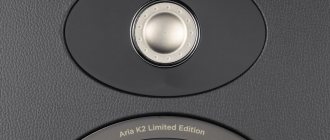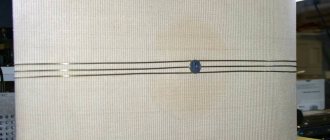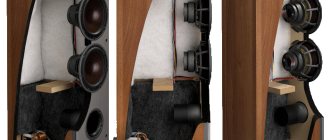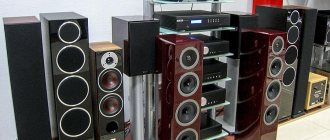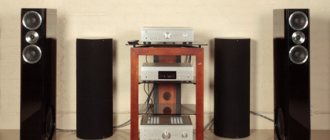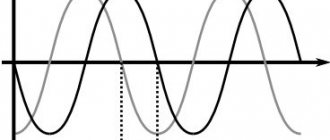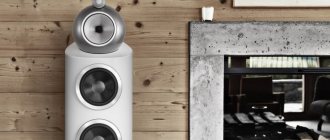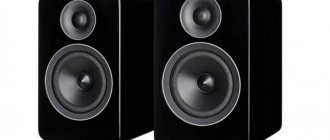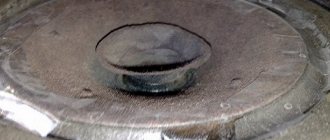Introduction of Focal Spirit One
Focal is known to many for its speaker systems with a proprietary ceramic tweeter. Spirit One headphones are the company's first headphones and, like all Focal products, use interesting technologies, in particular, a speaker membrane made of mylar with titanium. The headphones are intended primarily for portable use and are compatible with iPhone. Are the headphones as successful as other Focal speakers?
Spirit One's main competitors will be primarily headphones from well-known brands, such as Bower & Wilkins and the long-proven Audio-Technica ES-10 and Beyerdynamic DT1350.
The company was founded in 1979 and this does not indicate too much age, but nevertheless Focal-JMLab is one of the most technically advanced enterprises in the world of stereo systems. The company has its own laboratory engaged in the development of acoustic systems, and Focal's successes have more than once received world awards for quality, design and non-standard approach to problems solved. An example is the technology for manufacturing the dome of high-frequency speakers from pure beryllium - a material with unique characteristics, the difficulties of industrial processing of which for many years remained insurmountable for leading audio manufacturers in different countries. The research and development (R&D) department at the company's head office in Saint-Etienne is rightfully considered a benchmark in the audio industry in terms of scale, equipment and level of investment.
The beginning: the desire to innovate
The brand's history began in 1979, when engineer Jaques Mahul founded a small family operation in Saint-Etienne - a workshop for the production of speakers based on the precision mechanics company France Filières, which belonged to his father. The name turned out to be double, Focal JMlab: the second part means “Jacques Maule Laboratory”.
Jacques Maule
Jacques Maule was an engineer, technology journalist, and passionate about good sound from the age of 15. He first worked as chief engineer at Audax - and it was in this position that he was the first in Europe to develop a soft dome tweeter. In his own workshop, where only one person worked besides him, in the early years Maul produced only speakers, which he supplied to the largest manufacturers of speaker systems.
He then decided to release acoustics under his own JMlab brand, and the first model was the small DB13 bookshelf speakers, released in 1980: this model sounded like a larger acoustics - especially in the low frequencies. This result was achieved thanks to an unusual speaker with a double voice coil. At first, Jacques sold bookshelf only to acquaintances, but later released them to the market.
DB13
One of Focal JMlab's first major developments was the inverted dome tweeter, released in 1981. This driver featured a fiberglass membrane and soon became an iconic element of the brand's technology, as did the V-shaped and W-shaped speakers introduced later.
A distinctive feature of the company’s acoustics were bright yellow diffusers: for their production, Kevlar with aramid fibers of a shade that perfectly matched the technical characteristics was used. It is worth noting the 15-inch woofer with a magnetic system consisting of 12 magnets.
In the 1980s, two companies eventually emerged from the workshop: the aforementioned JMlab, which came from the production of small and medium-sized acoustics to the production of high-end acoustics, and Focal, which was engaged in the research and development of innovative drivers: it is the second brand that is famous for its speakers with composite polyglass diffusers and polykevlar, as well as Kevlar tweeters, which replaced fiberglass ones.
Polykevlar was a sandwich structure in which hollow microbeads of structured material were sandwiched between layers of aramid fiber. Polyglass was, in fact, a scattering of tiny composite microgranules on a paper substrate: this scheme made it possible to impart the necessary rigidity to a fairly light material.
During development, the company paid special attention to the crossover: their acoustics of those times often used complex solutions such as fourth-order filters, which included a considerable number of elements.
A commitment to finding unusual technological solutions and the belief that acoustics are inseparable from the speakers used in them allowed JMlab acoustics to break into the high-end equipment market - initially in their native France.
Appearance of Focal Spirit One headphones
The appearance of the headphones, if it overlaps with anything, is only with DJ headphones from Pioneer; otherwise, it is an individual appearance. The headphones are made in Hi-Tech style, a mixture of black and metal. There is a separate white version for fans of the Apple style. To give the headphones boldness and dynamism, the internal mesh is made of red fabric. The black elements are matte, and those stylized as metal have a milled structure; fingerprints do not remain on the surface.
The wire is of medium flexibility, round cross-section, covered with fabric braiding. The fabric braid reduces the microphone effect, because glides easily on the surface. On the wire there is a microphone with control buttons: answer, and separately volume. The wire is removable; a standard 3.5 mm jack is used as a connection. If something happens to the wire, it’s not a problem to find another one, and this also provides an advantage for using headphones not only on the road, but also at home, where at home you can use a separate long wire instead of an extension cord.
The cable has a straight plug, a 3.5 mm four-pin jack connector, compatible with iPhone. Not all devices support this connector, because... The design of the connectors is somewhat different for everyone and such headphones sound defective due to incompatible contacts (for example, with an ASUS Poebus external unit), but for this, the kit includes an adapter to a standard three-pin 3.5 mm connector. To connect to devices with a large jack connector, like the ASUS ST, there is a screw-on adapter.
The ear pads of the Spirit One headphones are tactilely soft. The ear pads are not removable, the size is slightly smaller than usual, for those with small ears it will be comfortable, but for everyone else it will be a little cramped.
Home theaters, multimedia systems
In the 2000s, Focal also paid a lot of attention to more affordable audio systems: home theaters, multimedia acoustics and triphonics. All models had a unique design. It is worth noting the 5.1 Focal Dome cinema set with small two-way satellites, shaped like an egg chair, and a flat subwoofer.
Dome
Also worthy of mention are the Little Bird 5.1 cinema set in a similar configuration with wideband satellites and the Bird 2.1 all-in-one format set, which included, in addition to a round compact stereo pair and a subwoofer, also a control module with an amplifier and player.
Little Bird
Especially for those who prefer to work with a laptop, Focal released the XS Book acoustics - an active stereo pair with curved side walls and a bass reflex located on the front panel, which made it possible to comfortably place narrow cases on the table.
XS Book
The series was developed in the triphonic format: XS 2.1 received a built-in docking station for Apple players and a USB DAC for communication with computers, plus a classic 3.5 mm minijack.
XS 2.1
Focal Spirit One package
The Spirit One headphones are supplied with a hard case, a pouch, a three-pin jack adapter, a 6.3 mm adapter and a manual for the headphones. What else do headphones need to be as complete as possible? Only a headphone stand, a long cable for home use and an Android headset cable (or an adapter for Android). The packaging of the headphones is neat and beautiful; the headphones are quite suitable as a gift.
Ergonomics of Focal Spirit One headphones
The fit of the Spirit One headphones is normal, there is neither super lightness nor excess weight, the pressure on the head is moderate. The impression is somewhat spoiled by the insufficiently large ear pads; here I would like to advise you to try on the headphones before purchasing, so as not to experience inconvenience later. The noise isolation of the headphones is at a good level. Thanks to the folding mechanism and rotating cups, the headphones can be folded in different ways and, accordingly, there are no problems with transportation. Also, due to the rotating mechanism of the earcups, the headphones are comfortable to wear around the neck. The height of the bow is adjustable discretely.
Design of Focal Spirit One headphones
The headband of the Spirit One headphones is metal, so you don’t have to worry about durability. The speaker used is a special 40mm Mylar speaker with titanium. If Mylar is a conventionally standard material, then the use of titanium should, in theory, give the membrane additional strength. A similar approach is used by Ultrasone, which also uses titanium in its speakers.
World recognition and Utopia
Having become a leader in the French market, the company began to think about entering the world stage. She was able to implement her plans with the arrival of engineer Gérard Chrétien: he was not only passionate about sound, but since 1977 he has worked as editor-in-chief of L'Audiophile magazine. He joined Focal JMlab in 1990 - at the same time the company began supplying its acoustics to Europe, Southeast Asia and North America, as well as participating in world exhibitions.
Vega
The most successful year for Focal was 1992: it was then that in Japan two audio systems - Vega and Alcor - received the title of “Best Component of the Year”. Focal was the first French company with technology to receive this recognition, and after that it devoted even more energy to the development and research of new materials and prototypes.
Alcor
So, in 1995, the company released a speaker with a W-shaped cone of a sandwich design, in which foam material, which was originally developed for aviation needs, was sandwiched between two layers of fiberglass. This design, both through materials and shape, provided the necessary rigidity and improved damping, without adding weight to the speaker.
Another result was experiments using titanium and titanium dioxide as tweeter cone materials, which led to the release of the brand's most iconic series, the Utopia, in 1995.
Utopia
The acoustics of this series surprised not only with the materials, but also with the form: each speaker in it was located in a separate housing, and the housings were located relative to each other with a slight slope, reminiscent of an accordion - this design made it possible to compensate for time delays between the mid-, high- and low-frequency sections and improve sound focusing.
The largest system in the Utopia series, Grande Utopia, was in development for three years. The acoustics were initially positioned as a niche solution, but then entered the wider market thanks to rave reviews from journalists.
The Grande Utopia featured 15-inch Audiom woofers with the same W-shaped diaphragm and twelve 3-inch magnets - they were located in the lowest housing of six. At the very top they installed a module with an 11-inch speaker that played the upper bass - behind it there was a crossover in a separate housing.
Grande Utopia
Between these modules, the company's engineers installed three more according to the d'Appolito scheme: two contained 6.5-inch midrange drivers and another, in the center, contained a 1.2-inch tweeter with a proprietary inverted dome made of titanium coated with a titanium dioxide film. A special mesh was installed in front of the tweeter, ensuring uniform sound with a dispersion of up to 30°.
By that time, 60 companies were using Focal speakers, including Wilson, Avalon, Thiel and Hales, but the speakers included in the Utopia series were unique. This series still remains the flagship in the company’s catalogue, now in its fourth generation.
The sound of Focal Spirit One headphones
To evaluate the sound of Spirit One, portable players Colorfly C3, Sony NWZ-F806 and ASUS Xonar Phoebus were used.
There were no problems with sensitivity; the volume level from both players in the subway was sufficient. When listening via Phoebus, the first gain stage was enough. However, those who are fans of deep bass should take into account that when using equalizers that reduce the level of mid frequencies, a separate amplifier will not hurt. The sound quality can be described as somewhat cold, with an emphasis in the high frequencies with a slight bias towards sibilance. Low frequencies, thanks to the medium-hard design, are transmitted tactilely from the headphones and thereby enhance them. Low frequencies are slightly dominant over other frequencies, but not significantly. If we consider headphones from the standpoint of genre, then we would like to recommend live music with minimal vocals for Spirit One headphones. The sound detail corresponds to its class, and we plan to find out whether this is the best one or not in a comparative review of full-size portable headphones.
Specifications Focal Spirit One
| General overview of the technical parameters of Focal Spirit One headphones | |||
| channel | |||
| general* | left | right | |
| Sensitivity average in the range 100 Hz 10 kHz, dB/V | 116,2 | 116,1 | 116,3 |
| Average resistance in the range 40 Hz 15 kHz, Ohm | 35,6 | 35,6 | 35,5 |
| For 94.0 dB SPL required, V | 0,078 | 0,079 | 0,077 |
| For 94.0 dB SPL required, mW | 0,169 | 0,175 | 0,166 |
| You can calculate the SPL level of headphones with a specific amplifier using an on-line calculator | |||
Sensitivity is average in the range of 100 Hz 10 kHz, is 116 dB/V, which is closer to the lower limit for portable full-size headphones at 110 dB/V, rather than the upper limit at 125 dB/V. A headphone volume amplifier will only be needed if you have a low-power phone or player. In all other cases, an external amplifier can reveal the potential of headphones in terms of sound quality, because The headphones have a low impedance of 36 ohms, which requires delivering a high level of current at a low output voltage. The impedance of headphones is a straight line, so with most amplifiers with a flat output impedance there will be no change, but with amplifiers with zero impedance and a rise in impedance in the low-frequency region at 40 Hz there will be a reduction of 1.7 dB. RAA Report:
Detailed report of technical parameters of Focal Spirit One
Automotive and professional acoustics
One of the important achievements for Focal was cooperation with automobile brands and the release of car acoustics. The car audio division appeared back in 1989: Jacques Maule loved cars and wanted to fully enjoy music on the road.
Peugeot
In 2001, Focal won the final of the IASCA world competition in the Expert category in the USA. Focal speakers can be found in cars of French brands - for example, Peugeot, the DS Automobiles sub-brand from Citroen, the revived Alpine, as well as in Italian Maserati.
Utopia Be
In 2002, the first update of the Utopia series with the Be index was released: beryllium tweeters replaced titanium tweeters. This lightweight metal, which is stiffer than steel, is still used by Focal today in its tweeters. Modern beryllium speakers are capable of playing in the range from 1 to 50 kHz with a sensitivity of 97 dB.
In 2002, the company also launched the Focal Professional line of professional acoustics, which still exists today and produces studio monitors. In the same year, the company concentrated all production in Saint-Etienne, seeking to gain maximum control over the process of creating acoustics and have the full right to decorate acoustics with the “Made in France” label. Currently, three quarters of all components used by Focal are manufactured in one place.
Profile
At the same time, Focal and JMlab merged under the name Focal: all brand products were now released under this common name. A year later, a collaboration began with the Parisian design agency Pineau & Le Porcher, which added a bit of industrialism to the appearance of the Focal acoustics. It was Pineau & Le Porcher who developed the appearance of the Profile and Electra lines, released in 2005, Chorus in 2006, Utopia in 2008 and Dome in 2009.
In 2007, Focal acquired the Guy HF case manufacturing facility in Bourbon-Lancy, in Saone-et-Loire. In 2008, the third generation of Utopia acoustics was released, which included the Grande EM, Scala and Diablo models.
Conclusion on Focal Spirit One headphones
The headphones turned out to be stylish, with excellent equipment and functionality in the form of compatibility with iPhone.
The sound is quite good, the sensitivity of the headphones is enough to work with portable players. The ergonomics let us down a bit due to the small ear pads; not everyone will be comfortable wearing the headphones and you should try the headphones on first before purchasing. Author:
16.12.2012
Found a typo in the text?
Select and press
Ctrl+Enter
. This does not require registration. Thank you.
